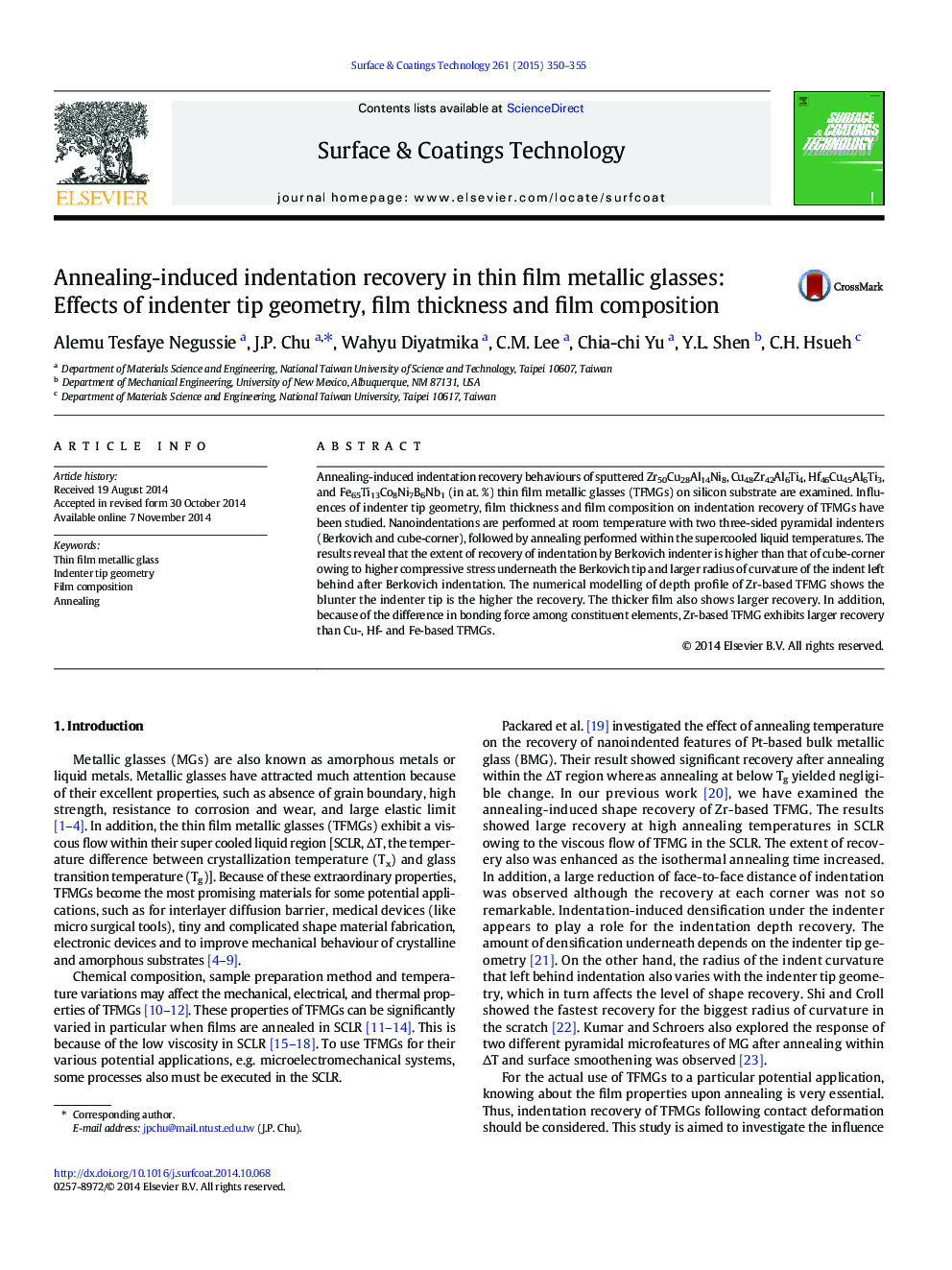| Article ID | Journal | Published Year | Pages | File Type |
|---|---|---|---|---|
| 1657324 | Surface and Coatings Technology | 2015 | 6 Pages |
•Thin film metallic glasses show indentation depth recovery after annealing.•The indentation made by the blunter tip reveals a high indentation recovery.•The effect of residual stress on recovery is confirmed by numerical simulation.•The thicker film shows a high degree of indentation recovery.•The film with lower glass transition temperature yields more recovery.
Annealing-induced indentation recovery behaviours of sputtered Zr50Cu28Al14Ni8, Cu48Zr42Al6Ti4, Hf46Cu45Al6Ti3, and Fe65Ti13Co8Ni7B6Nb1 (in at. %) thin film metallic glasses (TFMGs) on silicon substrate are examined. Influences of indenter tip geometry, film thickness and film composition on indentation recovery of TFMGs have been studied. Nanoindentations are performed at room temperature with two three-sided pyramidal indenters (Berkovich and cube-corner), followed by annealing performed within the supercooled liquid temperatures. The results reveal that the extent of recovery of indentation by Berkovich indenter is higher than that of cube-corner owing to higher compressive stress underneath the Berkovich tip and larger radius of curvature of the indent left behind after Berkovich indentation. The numerical modelling of depth profile of Zr-based TFMG shows the blunter the indenter tip is the higher the recovery. The thicker film also shows larger recovery. In addition, because of the difference in bonding force among constituent elements, Zr-based TFMG exhibits larger recovery than Cu-, Hf- and Fe-based TFMGs.
